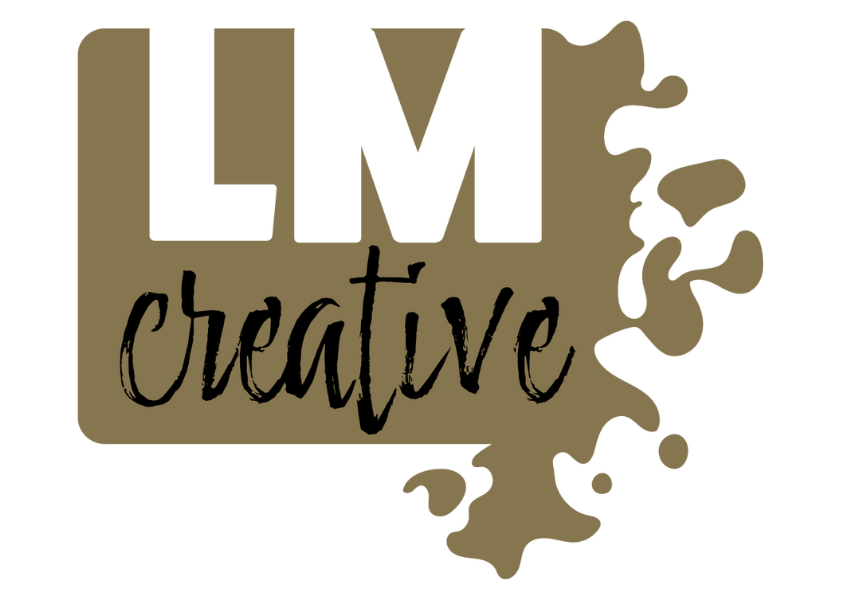Customer personas influence much more than just your marketing plan. They can help you develop products and services, streamline operations, create awesome user experiences, and so much more. Whether you’re a business owner, part of a marketing team, a non-profit organization, or even a community looking to attract investors, customer personas can help you pinpoint exactly the type of person you want to attract.
TABLE OF CONTENTS
Key Takeaways
Using Customer Personas for Everything
How Understanding Your Audience can Transform Every Part of Your Business!
One of the first questions we ask our new clients is, “Who is your target audience?” More often than not, the answer is a vague, all-encompassing description that might as well include everyone on the planet (and sometimes beyond!). The problem with this is simple: when you try to reach everyone, you end up reaching no one.
Building customer personas shouldn’t be just another business exercise that gets ignored. It’s an integral part of your business—woven into your business plan, strategic plan, marketing plan, and more. I’d even argue that it’s the most important exercise you can undertake for your business. If you do nothing else, do your customer personas. The customer persona will give you direction and focus and help you increase your revenues.
These detailed profiles of your ideal customers are your secret weapon for creating marketing strategies that actually work. In this article, we’ll explore the concept of customer personas, break down their components, and explain how to use them to target smarter and grow faster. Ready to dive in?
The Influence of Customer Personas
It’s More than a Marketing Tool.
First, let’s discuss customer personas’ impact on your business. While this article will focus on how customer personas impact your marketing strategies, their influence goes beyond that and can impact every area of your business.
Let’s take a look at some other areas of your business that can benefit from understanding your customers:
The list goes on and on, but today’s article focuses on marketing, so let’s get back to that, shall we?
The Answer to All Your Marketing Questions
Customer Personas can Answer the Thousands of Marketing Questions Rolling Around in Your Head.
Have you ever asked yourself any of the following questions, or thousands of others, about your marketing?
I am sure you have. When it comes to marketing, your customer personas can help you answer all your marketing questions by providing a clear picture of your customers.
Enhancing your marketing efforts with the use of customer personas can help you:
By creating detailed customer personas, you gain valuable insights that transform your marketing from guesswork into a targeted, effective strategy.
Creating Detailed Customer Personas
Creating Profiles for Targeted Marketing.
So, how do you get to know your customers? It’s all about digging into their demographics, geographics, psychographics, behaviours, hobbies, and interests.
Now that we’ve discussed all the amazing things you can do for your business simply by completing a customer persona, your task is to create one. The effort is well worth the reward. Are you ready to take the guesswork out of your marketing so that you can reach your customers and make more money? In this next part, we’ll dive deeper into each section of the customer persona so you can start building your persona today!
The Importance of Persona Segmentation
Hitting the Bullseye of Your Customer Target.
When developing a customer persona, it’s essential to start broad and then narrow your focus. The more specific your persona, the more effective your marketing strategies will be. You might even discover the need for multiple personas to tailor your marketing efforts more precisely. For instance, a skincare brand might develop different marketing strategies for men and women. This alone tells us that at least two separate personas are needed: one for men and one for women.
The goal isn’t just to change your target from 100% of the population to 50% but to create niches that may only target 1% of the population. Targeting (aiming for the bullseye) will lead to better-targeted efforts for each type of customer you want to attract. The more detailed your breakdown, the better your results will be.
Why Persona Segmentation Matters
Let’s consider a real-world example: a Strategic Marketing Plan we developed for a regional tourism committee. Their goal was to attract more tourists to their region. At first glance, you might think you can market to “tourists” as a single group. However, there are hundreds of different kinds of tourists, each travelling for different reasons, requiring different information, messaging, and images to connect with them and make them choose this region as their destination.
Through this project, we developed 23 customer personas based on the region’s available tourism assets and activities. For example, birders and motorcycle enthusiasts are two wildly different groups. You can’t use the same message to attract both. Birders might be interested in serene, natural settings and detailed information about local bird species. Motorcycle enthusiasts, on the other hand, might be drawn to scenic routes, exciting events, and amenities catering to road trips. Despite wanting both groups to visit the region, each required a tailored marketing approach.
In contrast, a rural Home and Reno Show required a more simplified approach. We developed one persona to attract homeowners to the event. This persona helped shape the marketing efforts by identifying homeowner pain points, interests, and needs. By understanding these elements, we effectively marketed the event and equipped the sales team to attract vendor businesses offering products and services that matched the audience’s home improvement needs.
Understanding Your Segmentation Needs
Segmenting your personas isn’t about making things complex. It’s about precision. Some businesses will benefit from a large number of detailed personas, while others might need only one or two. The key is understanding the diversity of your target market and how specific you need to be to effectively reach them.
For instance, if your business offers a broad range of products or services or if your target market is diverse, you’ll likely need multiple personas. Conversely, if your product is highly specialized or your market is narrow, a single detailed persona might suffice.
The better your breakdown, the more targeted and effective your marketing strategies will be. By understanding your customers on a deeper level, you can create messages that truly resonate, leading to higher engagement, satisfaction, and, ultimately, increased sales.
Now that we’ve emphasized the importance of detailed persona segmentation let’s dive into the first section of a customer persona: Demographic, Geographic, and Market Size.
Demographic, Geographic, and Market Size
The First Step to Narrowing Your Focus.
When developing a customer persona, you’ll start with a broad target and then narrow your focus as you collect more data. The first step is gathering demographic, geographic, and market size information. This foundational layer helps you understand who your customers are, where they are, and your potential market size. Keep in mind, as you dive deeper into your persona’s psychographic, behavioural, hobbies, and interests, you might need to revisit and refine these initial details. The more specific your persona, the more effective your marketing strategies will be.
Demographic Information
Demographic data provides you with an initial cut – taking your audience from millions to thousands. Demographic data will also play into psychographic and behavioural information as things like age, gender, income levels, life stage, etc., influence people’s interests, hobbies, characteristics, values, motivations, etc. Here’s a breakdown of key elements to consider:
Geographic Information
Geographic data tells you where your customers are located, which can influence their needs and preferences. Here’s what to consider:
Market Size
Estimating the potential market size is essential to gauge the scope of your customer base. This involves:
Remember, as you gather more detailed psychographic and behavioural information, you may need to refine your demographics, geographic data, and market size estimates. This ongoing refinement ensures your personas are as accurate and effective as possible, enabling you to create targeted marketing strategies that resonate with your ideal customers.
Psychographic Information
A Look Inside the Minds of Your Customers.
Psychographic information dives into the psychological aspects of your customers, revealing their personality traits, interests, and lifestyle choices. Understanding these elements not only informs the tone of your marketing messages but also influences design and visual aspects, such as colour palettes, image styles, and typography, to better resonate with your audience.
When developing the psychographic information section of your persona, you’ll want to examine personality characteristics, lifestyle choices, and social status. This information will also help you clarify interests and hobbies, which you can list in the interest and hobby section of your Persona.
Personality Characteristics
Personality characteristics significantly influence how customers perceive and interact with your brand. By understanding these traits, you can tailor your messaging to align with their inherent preferences and behaviours.
For instance, artistic, passionate, and creative individuals are drawn to visually appealing and emotionally resonant marketing. They value innovation and self-expression, often seeking out products and brands that reflect their unique tastes and aspirations. Marketing campaigns for this segment should use vibrant colours, creative designs, and storytelling to capture their imagination.
In contrast, patient, focused, and detail-oriented individuals appreciate information, clarity, precision, and reliability. They value thoroughness and are drawn to marketing that provides detailed explanations and clear benefits. Campaigns for this segment should emphasize the quality, functionality, and meticulous design of products using detailed product descriptions, informative videos, and clear, concise messaging.
Lifestyle
Understanding your customers’ lifestyles helps you tailor your marketing strategies to their daily habits and interests.
For example, active and health-conscious individuals prioritize health and fitness by regularly exercising and following fitness influencers. Marketing to this segment should focus on fitness tips, healthy recipes, and vibrant imagery featuring wellness activities.
On the other hand, busy professionals lead fast-paced lives and highly value efficiency and convenience. They look for ways to manage their time effectively. Marketing strategies for this segment should center around time management tips, productivity hacks, and sleek, professional imagery that conveys efficiency and sophistication.
Social Status
Social status, including societal and economic standing, can influence purchasing decisions and brand perceptions.
For instance, affluent customers often seek luxury, exclusivity, and high-quality products. Marketing campaigns targeting this segment should highlight exclusivity, craftsmanship, and prestige, using high-quality imagery and elegant designs.
In contrast, middle-income customers prioritize value for money, practicality, and quality. Messaging could emphasize cost-effectiveness, durability, and practical benefits, using relatable imagery and straightforward messaging.
Avoiding Irrelevant Segments
While psychographic information can be incredibly insightful, avoiding segments that could alienate or offend your audience is important. Religious and political affiliations are often too sensitive and polarizing to include in your personas. Focusing on neutral, universally applicable traits helps maintain broad appeal and avoids potential controversies.
By completing the psychographic section of your Customer Persona, you start to understand what makes your target market tick. Once you have this section complete, you will have identified components of your marketing strategy—colours, tone of voice, imagery, advertising style, and even social media channels that your customers prefer to use. This information takes a lot of guesswork out of your marketing strategies. Now, let’s get to the next section of the Customer Persona, the Behavioural Information section, which will pull everything together by helping you decide what to say to your target market through your marketing strategy.
Behavioural Information
Discovering Your Customers’ Values, Emotional Triggers, Drivers, and Motivations.
Behavioural data about your target customer provides insights into your customers’ values, emotional triggers, drivers, and motivations. Knowing this information allows you to complete the second and most crucial part of your marketing strategy: the words you will use (your messaging and copywriting) to connect with your audience to trigger the sales cycle. Understanding Behavioural Information will also influence your content strategy, advertising campaigns, email marketing strategy, customer journey mapping, product positioning, sales funnel, customer retention strategy, and so much more.
Values
Values are the core principles and beliefs that guide your customers’ actions and decisions. Knowing what your customers value most helps you create messages that align with their worldviews and principles. By understanding your customers’ values, you can better align your business and your marketing messaging to connect with the target audience on matters that are truly important to them.
For instance, eco-conscious customers value sustainability and environmental responsibility. Your marketing message should emphasize your brand’s commitment to eco-friendly practices, using phrases like “sustainable,” “green,” and “environmentally friendly.” Value-seeking customers prioritize getting the best value for their money. Here, you want to highlight affordability, cost-effectiveness, and value-for-money in your messaging, using terms like “best deal,” “affordable quality,” and “smart investment.”
Of course, you can also have eco-conscious, value-seeking customers. In this case, you combine the desired highlights based on the values and ensure your marketing messages are well-rounded to hit the points for each of the values you’ve established.
Emotional Triggers
Emotional triggers are stimuli that evoke a strong emotional response from your audience and are often the driving force behind why people make a purchase. The triggers tap into the emotional reasons that compel customers to take action, whether it’s the excitement of a new adventure, the comfort of trust in a brand, or the urgency to not miss out on a great deal. Identifying these triggers allows you to create messages that evoke desired emotions.
Let’s return to our eco-conscious and value-seeking customers. A value-seeking customer may respond well to Fear of Missing Out (FOMO) messaging. Offering limited-time or exclusive deals can trigger a sense of urgency and excitement. Words such as “limited time only,” “exclusive offer,” or “while supplies last” can trigger the emotion and make the sale.
For eco-conscious consumers, emotional triggers often include a sense of responsibility, pride, and a sense of urgency regarding environmental impact. They are triggered by their desire to make a positive difference and support sustainable practices. Using language such as “make a difference,” “reduce your carbon footprint,” and “commit to zero waste” can trigger emotions, leading the consumer to take the desired next step.
Motivations and Drivers
Motivations refer to the broader reasons or goals that drive behaviour. They encompass the deeper psychological, emotional, or social factors influencing individuals’ actions. Motivations can be intrinsic (personal satisfaction, self-improvement) or extrinsic (reward, recognition).
For example, an eco-conscious consumer is motivated to choose eco-friendly products because of a commitment to sustainability and environmental preservation. A consumer motivated by social status may opt for luxury goods to reflect personal success and showcase their social status.
Drivers are the underlying motivations that push your customers to purchase or engage with your brand. They are the internal factors influencing decision-making and can vary widely among customer segments. Understanding these drivers helps you to create compelling reasons for your audience to choose your product or service, ultimately motivating them to take action. Drivers are often more immediate and tangible.
For example, a parent buying a stroller because their current one is worn out and unreliable or a tech enthusiast purchasing the latest smartphone for its advanced features and performance capabilities.
Understanding both drivers and motivations is crucial for businesses to create effective marketing strategies that resonate with their target audience. By identifying the specific drivers behind immediate purchase decisions and uncovering the deeper motivations that drive long-term consumer behaviours, businesses can:
By understanding what drives and motivates their consumers, businesses can effectively influence purchase decisions and foster long-term customer loyalty
Behavioural information is a powerful tool for developing customer personas and crafting effective marketing strategies. By understanding your customers’ values, emotional triggers, drivers, and motivations, you can create messages that capture their attention and inspire action. This deeper connection with your audience will lead to higher engagement, increased loyalty, and, ultimately, greater success for your brand.
Hobby and Interest Information
What are Your Customers Passionate About?
Understanding your customers’ hobbies and interests goes beyond demographics and psychographics. It provides a deeper insight into their lifestyle and passions, influencing how they spend their time and money.
Why Knowing Hobbies and Interests Matters
Customers’ hobbies and interests offer valuable clues about their lifestyle preferences, leisure activities, and personal values. These insights can significantly impact your marketing strategies in several ways:
How to Use This Information in Your Marketing Strategies
Once you’ve identified your customers’ hobbies and interests, integrate this information into your marketing strategies:
By incorporating hobbies and interests into your customer personas, you can deepen your understanding of their lifestyle preferences and enhance your marketing efforts to connect more effectively with your target audience.
How to Reach Your Target
The Information You’ve Gathered Leads to Knowing Where to Reach Your Target Market.
By thoroughly researching and developing your customer persona, you gain valuable insights into where and how to reach your target audience. Whether it’s through Facebook ads targeting specific interests, LinkedIn for professional networking, local newspaper advertisements, or niche magazines, your persona guides strategic decisions on where to allocate your marketing resources effectively.
The good news is you’ve already collected everything you need to know to choose the right delivery methods. Using the insights gathered from industry-specific reports and demographic profiles, you can pinpoint the optimal delivery channels for your marketing efforts. Consider the following factors:
Putting it All Together
Give Your Persona a Name, a Face, and a Backstory.
The final step in building your customer persona is to bring all the collected data to life by giving your persona a name, a face, and a backstory. This transforms abstract statistics and behavioural notes into a relatable individual who embodies the characteristics and preferences of your ideal customer. It lets you think of your persona as an individual person—someone you could call in the middle of the afternoon to chat with.
Why Create a Bio and Image?
Giving your persona a persona helps humanize your marketing efforts. Instead of targeting a faceless demographic, you now have a specific individual in mind. This makes empathizing with their needs, desires, and challenges easier, allowing you to craft more compelling and relevant marketing strategies.
For Example, Meet “Alexandra,” a 28-year-old graphic designer who lives in a small town and enjoys hiking on weekends. Alexandra values sustainability and seeks products that align with her eco-conscious lifestyle. She prefers informative blogs and social media platforms like Instagram for inspiration and community engagement.
Make your bio as long as you need to pull Alexandra into existence. Sometimes, this is a couple of paragraphs, and other times, it’s a couple of pages.
Using Your Persona in Marketing Strategies
When developing marketing strategies, consider Alexandra as your audience. What messages will resonate with her? What visuals will catch her eye? Which platforms will she frequent? By answering these questions from Alexandra’s perspective, you can tailor your content, advertisements, and communication channels to better connect with her and others like her.
Creating a bio and image for your persona provides a focal point for your marketing efforts. It ensures that every piece of content and every interaction is guided by a clear understanding of your customer’s preferences and motivations. This personalized approach enhances engagement, increases relevance, and ultimately drives conversions and customer loyalty.
Tools and Resources for Building Customer Personas
Where the Heck are You Supposed to Find all This Information?
Building accurate and insightful customer personas requires the use of various tools and resources that provide deep insights into your target audience. Here’s how each resource contributes to developing a comprehensive persona:
Summing Up
Customer Personas Take the Guesswork Out of Marketing.
Throughout this article, we’ve shown how customer personas can transform your marketing and beyond. They cut out the guesswork, giving you clear direction for your marketing, sales, user experience, product development, customer service, and more.
When it comes to marketing, building customer personas lets you develop a laser-focused targeting strategy that helps you grow your business and make more sales. Your marketing—and your entire business—shouldn’t try to reach everyone. Focus on those who matter most: the people who have a burning desire or need for what you sell.
It’s time to embrace success. Start creating your customer personas today. If this is the only thing you do for your business this year, you’ll see the difference.
We Can Help You Grow!
LM Creative Can Create an Insightful Customer Persona for You.
Are you ready to take the guesswork out of your marketing? Let our team of experts help you with a Customer Persona Guide tailored for your business. We’ll provide you with profiles that not only highlight your ideal customers but also provide you with marketing strategies to help you drive your business forward. Let us handle the heavy lifting so you can focus on what you do best—growing your business.
The Right Team. The Right Solution.
Learn more about us and see if we’re the right addition to your team.
About LM Creative
Empowering Success Through Tailored Marketing and Creative Solutions
At LM Creative, we’re proud to partner with small and medium-sized businesses across Manitoba to drive growth and achieve lasting success. Our services—spanning marketing, website design & SEO, graphic design, and visual storytelling—are designed with local entrepreneurs and their unique challenges in mind.
We specialize in providing coaching, consulting, and creative solutions that equip Manitoba business owners and teams with the tools they need to succeed. Whether it’s fractional marketing, a fractional CMO, or a fresh perspective on your brand’s story, we’re here to bridge resource gaps, simplify your marketing efforts, and deliver real results.
Let LM Creative help your Manitoba business build a strong foundation for success.
















